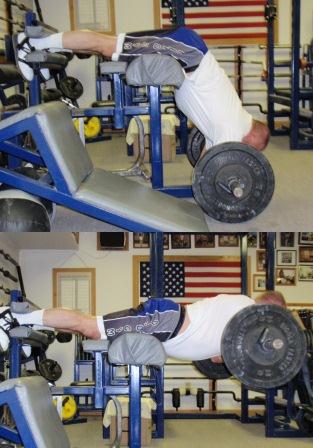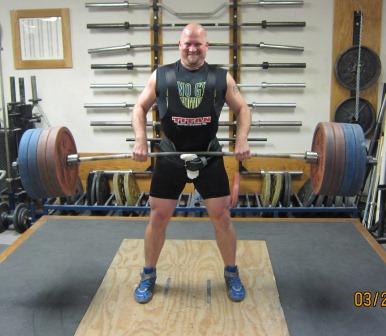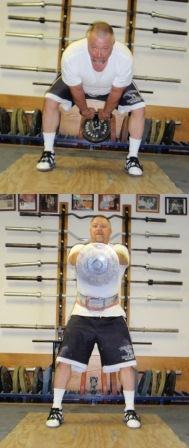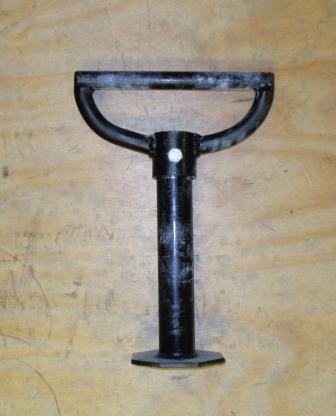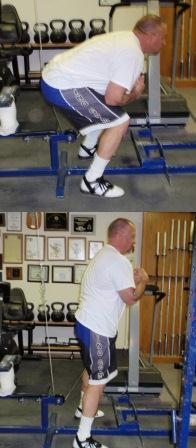Breath, Stupid!
by Thom Van Vleck
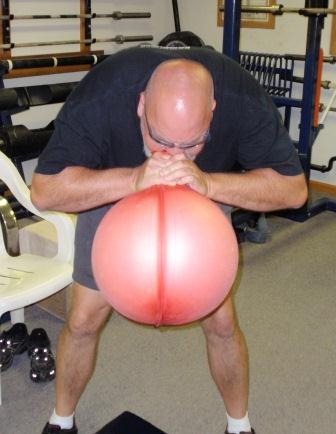
Thom blowing up a hot water bottle till it burst. We all know Thom is the EXPERT when it comes to breathing, as he is "full of hot air". (photo and caption courtesy of the webmaster)
Recently my Mom returned from the doctor. She was incredulous about what he had told her. He had told her she was breathing wrong. My Mom looked at me and said, “Who wouldn’t know how to breath?”. I was also watching a kid’s show with my youngest son shortly after that. One of the characters was depicted as being so stupid that he would periodically forget to breath and would turn blue forcing his companion to remind him to, “Breath, Stupid”!
We all know how to breath, right? It pretty much comes naturally….doesn’t it? The devil is in the details. We may know how to breath, but breathing properly during exercise is important. I have learned a great deal on this subject over the years and this little article won’t do the subject justice, but maybe it will get you thinking.
First of all, I was taught at a young age to “suck that gut in” and breath with your chest. I recall at one time watching a video of Jack LaLanne saying just that. When I was in the military I was constantly told to pull that stomach in and stand up straight. Also, I was always a little self conscious as I’ve been a little overweight since I as a teenager. So, “sucking it in” has been drilled in my head. As a consequence, I have always had trouble getting my “wind” or getting too out of breath when I do something even slightly aerobic. I never really thought much about it, just assumed I was out of shape and needed to work harder.
Then, one day I was doing some short sprints. I began to notice that I would hold my breath when I would take off and focus on keeping my stomach super tight. I then read something about learning to breath with your stomach, not your chest, and I began to work on that. Believe it or not, it was an article on how to play the trumpet! All of a sudden, I found I had better “wind”. In other words, I wasn’t as out of breath when I breathed through my stomach and not my chest. I also began to take deep breaths using my stomach before exertion, before going out to squat, sprint, or do strongman harness pulls. Using the stomach to breath deep, full breaths filling my lungs helped me have better “wind”. It also came in hand with one of my specialty feats of strength….blowing up a hot water bottle!
Second, I began to think about my use of the Valsalva Maneuver. About ten years ago I had an “Idiopathic Sub-retinal Neo-vascularization” in the retina of my left eye. Basically, I had a small tear in my retina and a vein grew through it like crab grass in the crack of a sidewalk. As a result, the “crab grass” had to be zapped with a laser and I lost some vision. It was called “Idiopathic” because there was no readily apparent cause. I now suspect it may have been Valsava Retinopathy. This is when a tear occurs in the retina following pressure buildup likely during the use of the Valsalva Maneuver in lifting.
What is the Valsalva Maneuver? It’s simply taking and holding a deep breath during exertion or if you want to get technical, a “forcible exhalation against a closed glottis”. I had done that for years. When you hold your breath you build up intra-abdominal pressure and in turn solidify your core. This is a primary reason for using a lifting belt. You use the belt to push your abdomen against and increase the internal pressure. The support in the back is really secondary in my book. There is a theory as to why you get light headed during extended periods of using the Valsalva Maneuver. It involves the Vagus Nerve that runs by your Carotid Artery. The idea is that as the blood pressure goes up the Vagus Nerve is stimulated causing you to faint so you pass our before you stroke out! That’s just a theory. Personally, I would guess the fact you have stopped breathing has something to do with becoming light headed! The rapid change in blood pressure could also factor in. At any rate, this is often what gets blamed, and likely rightfully so in most cases, for deaths when lifters get pinned by a heavy bench press when lifting alone.
So, how are you supposed to breath? The reality is that if you are doing a max effort for single or low reps you are going to hold your breath at some point and take advantage of the intra-abdominal pressure. You just can’t avoid it. However, most “experts” will say to breath out during the concentric part of the lift and in during the eccentric whenever possible. This is what I’ve tried to do as well with most exercises. There are some that I do the opposite. For example, from time to time I mix in some high rep leg presses for a set of 100 or more reps nonstop (I know, real lifters don’t leg press….unless it’s an old school leg press like Ed Zercher used to do). When I do these I have a lot of compression at the bottom so I breath out on the eccentric (going down), which is the opposite. I basically breath in the way that keeps the intra-abdominal pressure lowest.
Bottom line: Think about your breathing during each and every exercise! Breath deep, through the stomach, not the chest. Keep that intra-abdominal pressure as low as you can and save it for the big lifts! By the way, I talked to my Mom’s doctor and he noted she was breathing with her chest, not her stomach and this was creating pressure in her abdomen and with her high blood pressure this was not good. She is learning how to breath, too!
